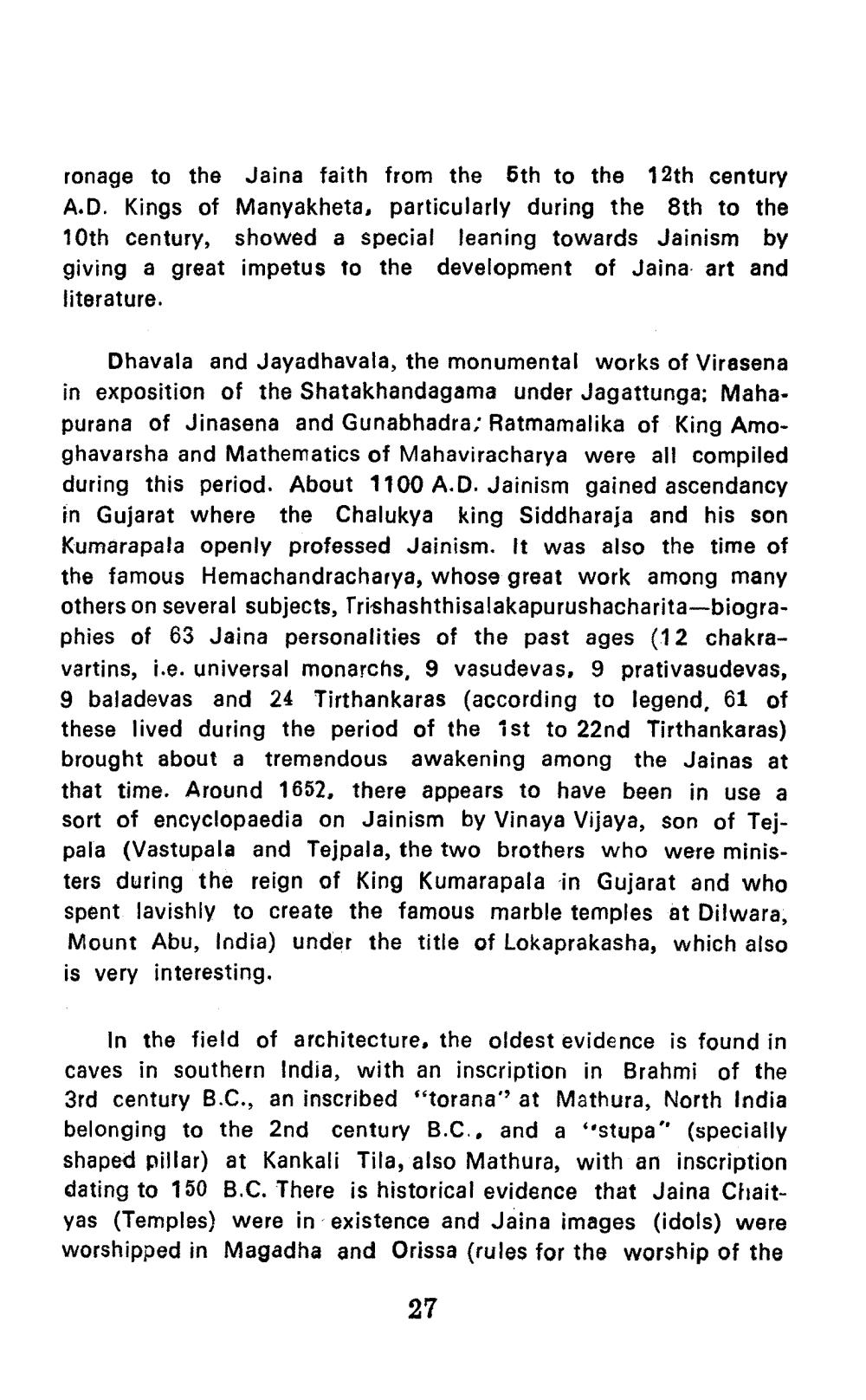________________
ronage to the Jaina faith from the 5th to the 12th century A.D. Kings of Manyakheta, particularly during the 8th to the 10th century, showed a special leaning towards Jainism by giving a great impetus to the development of Jaina art and literature.
Dhavala and Jayadhavala, the monumental works of Virasena in exposition of the Shatakhandagama under Jagattunga; Maha. purana of Jinasena and Gunabhadra; Ratmamalika of King Amoghavarsha and Mathematics of Mahaviracharya were all compiled during this period. About 1100 A.D. Jainism gained ascendancy in Gujarat where the Chalukya king Siddharaja and his son Kumarapala openly professed Jainism. It was also the time of the famous Hemachandracharya, whose great work among many others on several subjects, Trishashthisalakapurushacharita-biographies of 63 Jaina personalities of the past ages (12 chakravartins, i.e. universal monarchs, 9 vasudevas, 9 prativasudevas, 9 baladevas and 24 Tirthankaras (according to legend, 61 of these lived during the period of the ist to 22nd Tirthankaras) brought about a tremendous awakening among the Jainas at that time. Around 1652, there appears to have been in use a sort of encyclopaedia on Jainism by Vinaya Vijaya, son of Tejpala (Vastupala and Tejpala, the two brothers who were ministers during the reign of King Kumarapala in Gujarat and who spent lavishly to create the famous marble temples at Dilwara, Mount Abu, India) under the title of Lokaprakasha, which also is very interesting,
In the field of architecture, the oldest evidence is found in caves in southern India, with an inscription in Brahmi of the 3rd century B.C., an inscribed "torana" at Mathura, North India belonging to the 2nd century B.C., and a "stupa" (specially shaped pillar) at Kankali Tila, also Mathura, with an inscription dating to 150 B.C. There is historical evidence that Jaina Chaityas (Temples) were in existence and Jaina images (idols) were worshipped in Magadha and Orissa (rules for the worship of the
27




